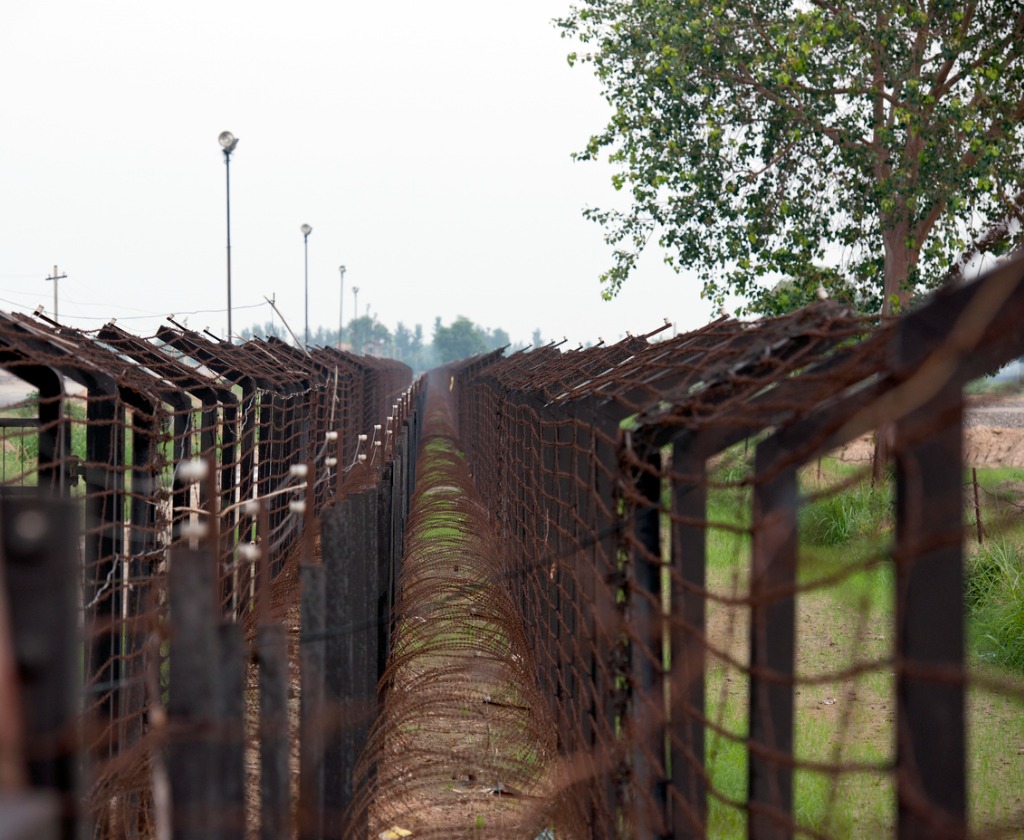
FENCING- A VIABLE SOLUTION AGAINST PEACETIME SECURITY THREATS

After announcement of fence along India-Myanmar border by Union Home Minister Amit Shah, a larger debate kicked off on viability of fence as security imperative verses inefficacy of fencing on Indian borders. Some commentators tried to highlight inefficacy of fence based upon evidence from different parts of world to buttress argument that fencing is not a foolproof solution to address peacetime border threats; others considered it necessary for security. It may not be out of place to mention that peacetime border security threats, existing along Indian, European, Russian or American borders are not comparable in magnitude and gravity. Indian borders are unique in topographical diversity and unprofessional arbitrariness in delineating them by occupational powers. The environmental conditions existing on Indian and western borders are very different in terms of geographical configuration of borders, climatic conditions, development, population concentration along borders. State of diplomatic relations also is a factor. Peacetime border security challenges along Indian borders pose serious threat to internal and external security. They constrict growth affecting economy and infrastructural development, fanning poverty affecting societal harmony. Border security threats on Indian borders are unique in nature and character. Therefore, comparing present day Indian borders with Berlin wall between then West and East Germany or fenced US Mexico border or any other border may not be just and proper. Nation’s security is paramount, and governments need to take harsh and difficult decisions to preserve national security, do everything under its power to make security impregnable and impenetrable. Fencing the Indo-Myanmar border for the purpose is most viable solution to address peacetime security threats.
What threats along Indian borders, forced government of India to fence Indo-Pakistan border and Indo-Bangladesh borders. What is the experiencing of fencing both borders? Have it been successful in containing threats or otherwise. Let us examine based upon evidence available in public domain. Cross border, infiltration and militancy in Punjab started germinating in late seventies and assumed full-blown monstrous dimension in early/mid-eighties. There was cross border infiltration and exfiltration, smuggling of arms and ammunition to sustain militancy in state of Punjab posing major internal and external security challenge. The forces deployed despite best efforts were not able to contain threats emanating from Pakistan border being open and porous. Annual report of Ministry of Home Affairs for 1981-82 under chapter II Law and order says, “Punjab witnessed a series of violent incidents by Sikh extremists who also hijacked an IAC aircraft to Lahore on 29 September 1981”. Thus came the concept of construction of fence along Indo-Pakistan border in Punjab, which commenced in late eighties and successfully plugged export of terrorism from across the border enabling internal security forces to quell and wipe out terrorism from Punjab. Fence played major role in quelling militancy in Punjab by choking supply lines. The concept was later extended to Jammu border followed by construction of fence along line of control. Fence has stopped infiltration along Punjab border and has brought down incidents of infiltration drastically along International border and line of control. Imagine open borders along Punjab and Jammu and Kashmir with hostile Pakistan itching to exploit, to create internal turmoil in India especially Punjab and Jammu and Kashmir and flames engulfing neighbouring Himachal Pradesh, Haryana, and western Uttar Pradesh and up to Delhi. Fence is a huge success story along Indo-Pakistan border.
Illegal migration from Bangladesh posed a major security threat on Indo-Bangladesh border, which also altered demographic pattern of border areas in states contiguous to Bangladesh. Unchecked rampant illegal migration from open Bangladesh border forced Government to fence Indo-Bangladesh border despite massive opposition from Bangladesh. Fence construction commenced in mid-eighties. In reply to question by Rajya Sabha MPJharna Das Baidya, Minister of state for home affairs Kiran Rijiju stated, “There are reports of Bangladeshi nations having entered the country without valid travel documents. Since the entry of such Bangladeshi nationals is clandestine and surreptitious, it is not possible to have accurate data of such Bangladesh nations living in various parts of country. As per available inputs, there are 20 million (two crore) illegal Bangladesh migrants staying in India”. This surpasses the 2004 estimate of 1.2 crore given by UPA government which was later withdrawn. As per annual report of Ministry of Home affairs 2022-23, out of total length of 4096.7 Kms of border, 3180.653 Kms has been fenced and physical and non-physical barriers will cover 916.047Kms. There is need to accord top priority to fence the entire Indo-Bangladesh border to stop illegal migration. Fencing along Indo-Bangladesh border has been successful in putting a check on illegal migration.
The existence of and random use of infiltration routes along international border and line of control by terrorists should be nobody’s argument for labelling fencing as useless along Indo-Pakistan border. The fencing along Indo-Bangladesh border has been successful in controlling illegal migration. Labelling fencing along Indo-Bangladesh border as ragtag because of riverine issues is unjustified and uncalled for. The analysts need to appreciate very difficult irregular unpattern arrangement of natural physical features like rivers, nullahs and ravines. Terrorists and illegal migrants exploit this despite being guarded and kept under observation is reason why encounters take place, terrorists are killed, and illegal migrants arrested. Fencing as physical barrier has contributed immensely to making peacetime border security foolproof.
This brings us to the question of fencing 1643Kms Indo-Myanmar border. Four Northeastern states of Arunachal Pradesh, Nagaland, Mizoram and Manipur share border with Myanmar. People to people contact and movement of people has been continuing since 1947 despite free movement regime or its equivalents existing since decades in one form or other. Free movement regime as of now stand scrapped. It is fact that unabated illegal migration changes demographic pattern and is a security nightmare. Unabated continuous infiltration and illegal migration from Myanmar poses major internal and external security threat to north-eastern states. This need to stop and only way is fencing Indo-Myanmar border. Political linking of fencing project with Manipur imbroglio has landed the project before it takes off into unnecessary controversy not boding well for the project. With political linking, an attempt is made to showcase the project as political initiative to placate Meitei’s which further deepens already existing fault lines between Meitei’s and Non Meitei’s such as Kukis,Chin,Mizo.Zomis,Hmarsand Kuki-Chins . There seems an attempt to instigate locals to oppose the project and delay its execution thus making it administratively and financially unviable. Government need to strongly dispel political motives tagged to project in national security interest. Fencing project along Indo-Myanmar border is national security need. There is no need to scrap free movement regime. It can be effectively integrated into fencing project thus meeting border security needs and ethnic aspirations. This will satisfy aspirations of all political groups and strengthen national security. Wherever national security needs require borders to be fenced, they must be fenced considering that impregnable border security is must to make national security fool proof. Therefore, fence along Indo-Myanmar border is need of hour in national security interest and must be executed as national project.
Disclaimer
The opinions expressed in this article are the author’s own and do not reflect the views of Chanakya Forum. All information provided in this article including timeliness, completeness, accuracy, suitability or validity of information referenced therein, is the sole responsibility of the author. www.chanakyaforum.com does not assume any responsibility for the same.
Chanakya Forum is now on . Click here to join our channel (@ChanakyaForum) and stay updated with the latest headlines and articles.
Important
We work round the clock to bring you the finest articles and updates from around the world. There is a team that works tirelessly to ensure that you have a seamless reading experience. But all this costs money. Please support us so that we keep doing what we do best. Happy Reading
Support Us















POST COMMENTS (0)